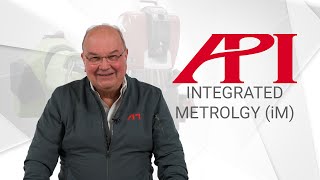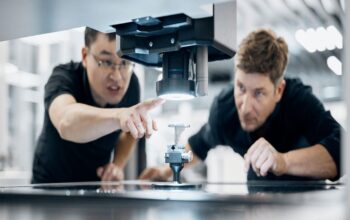In a recent address, Joe Bioty, President of Automated Precision Inc. (API), outlined the company’s groundbreaking vision for Integrated Metrology (iM). This vision promises to revolutionize the way industries approach precision measurement, quality assurance, and manufacturing efficiency.
What is Integrated Metrology (iM)?
Integrated Metrology (iM) represents the next evolution in precision measurement technology. Unlike conventional portable dimensional metrology, iM involves the integration of advanced sensors and technologies that not only validate design specifications but also enhance manufacturing processes. According to Joe Bioty, “Listening to customers and the needs of industry throughout API’s 35 years has driven our business to develop a broad portfolio of dimensional metrology sensors.”
The Role of Sensors in Modern Manufacturing
Today’s factories rely heavily on high-quality sensors to measure and collect reliable data throughout the production process. API’s portfolio includes laser trackers, scanners, and the innovative 9D LADAR systems, all categorized as essential sensors. These sensors are crucial for creating the digital design twin of Industry 4.0 and Quality 5.0, providing real-time feedback from the shop floor and ensuring that design specifications are met to improve the final product’s quality.
Joe Bioty explains, “API’s innovative sensors are now an integral part of the factory floor. We call that sensor feedback ‘Integrated Metrology’.”
How iM Works: A Practical Example
A prime example of iM in action is API’s Dynamic 9D LADAR. This non-contact laser sensor scans 20,000 points per second with the accuracy of a laser tracker. When used in-line on an automotive body-in-white assembly line, it scans over one hundred features of the car body as it moves along the line, ensuring consistent quality for each new frame.
The data collected by the LADAR is then used to improve subsequent manufacturing processes. For instance, if the center hole position accuracy is slightly off from the initial design, the data allows robots further down the line to compensate for this deviation when hanging the door hinge and door. This real-time adjustment maximizes door quality in terms of flush and gap, showcasing the power of iM to enhance product quality continuously.
The Broader Impact of Integrated Metrology
Integrated Metrology isn’t limited to automotive manufacturing. It plays a critical role in factory automation across various industries, utilizing robots, linear rails, turntables, and other positioning devices for precision machining, assembly, and inspection. It complements conventional Coordinate Measuring Machines (CMMs) and CNCs where higher precision is necessary.
Joe Bioty emphasizes that multiple sensors work together in iM solutions. For example, API’s LADAR does not replace the laser tracker; instead, they work in tandem to provide a 6DoF precision, large-volume solution offering maximum set-up flexibility.
API’s Commitment to Innovation and Customer-Centric Solutions
API’s commitment to Integrated Metrology is a continuation of its 35-year legacy of being a customer-centric company. By deploying a comprehensive product and services portfolio, API’s iM vision aims to create optimal automation solutions that reduce manufacturing costs while improving efficiency and product quality.
Joe Bioty concludes, “It’s the latest proof of API’s promise to never stop working to make the fastest, most accurate, easiest-to-use dimensional metrology measurement solutions possible.”
Conclusion
API’s Integrated Metrology (iM) vision is set to transform precision measurement and quality assurance in manufacturing. By integrating advanced sensors and leveraging real-time data, API is leading the way towards more efficient, cost-effective, and high-quality manufacturing processes.








